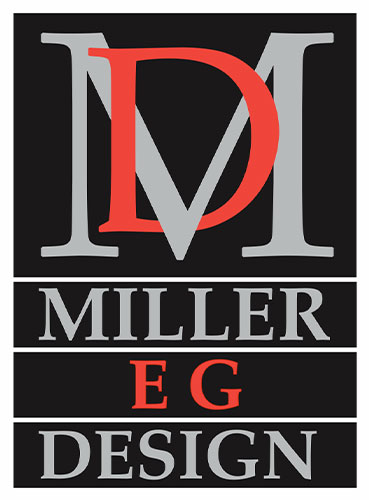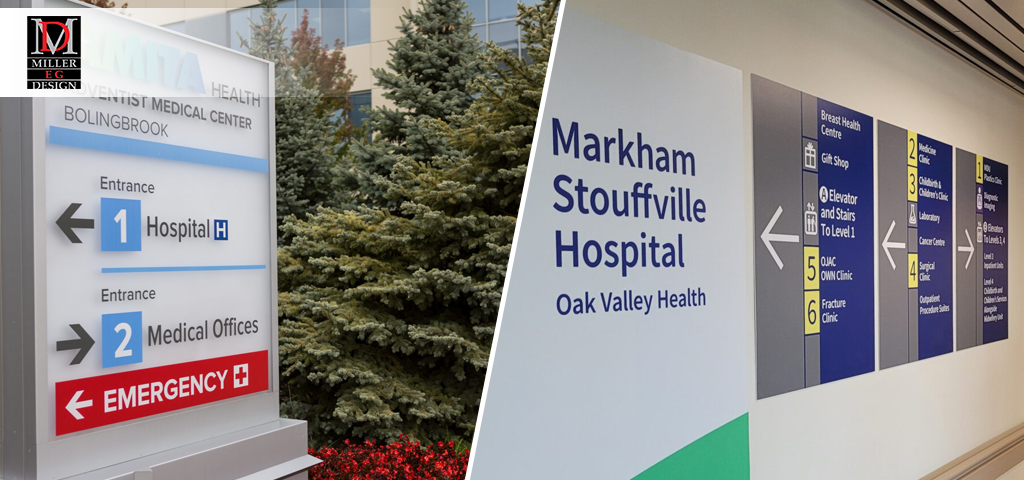In the world of behavioral health, the environment plays a crucial role in healing. A calm, welcoming, and easy-to-navigate space helps reduce anxiety, promote comfort, and set the stage for positive treatment outcomes. At Miller EG Design, we specialize in transforming healthcare environments by implementing intentional wayfinding solutions tailored specifically for behavioral health facilities. Our mission is simple: clear paths lead to clear minds.
The Importance of Wayfinding in Behavioral Health
Behavioral health patients often arrive at treatment centers feeling overwhelmed, confused, or emotionally fragile. The last thing they need is the added stress of navigating a complex facility. Wayfinding—the process of guiding people through a physical environment—is not just about signage; it’s about creating a visual and psychological map that makes patients feel grounded and supported from the moment they arrive.
In behavioral health settings, effective wayfinding can improve the overall patient experience by:
- Reducing anxiety through clear directional cues
- Creating a sense of safety with intentional layout and design
- Promoting independence for patients and visitors
- Minimizing staff interruptions caused by lost or confused individuals
These benefits not only enhance the patient journey but also improve operational efficiency and support caregivers.
Designing for Clarity and Compassion
At Miller EG Design, we approach behavioral health wayfinding with empathy and expertise. We know that every design decision—colors, materials, typography, lighting—can impact a patient’s emotional and psychological state. Our team collaborates closely with facility administrators, therapists, and architects to create wayfinding systems that are visually soothing, functionally effective, and ADA-compliant.
Here are several key elements we consider when designing for behavioral health environments:
1. Color-Coded Zones
Color plays a significant role in orientation. Soft, calming hues assigned to specific wings or departments can help patients visually map their surroundings. For example, blue may represent therapy rooms, while green could indicate recreational spaces. This system reduces confusion and encourages familiarity with the environment.
2. Non-Institutional Aesthetics
Traditional hospital signage can feel cold and clinical. We replace stark arrows and sterile fonts with thoughtful, friendly visuals and typography. Our signage design complements interior décor, contributing to a therapeutic atmosphere that feels more like home and less like a facility.
3. Positive Messaging
Incorporating affirmations and encouraging language within the wayfinding system helps reinforce healing and hope. Simple messages like “You’re Almost There” or “Take a Deep Breath” can offer emotional reassurance during moments of uncertainty.
4. Landmarking and Spatial Memory Aids
We use architectural features, artwork, or natural lighting as visual landmarks. These elements give patients mental reference points and contribute to a stronger sense of orientation within the building.
5. Multi-Sensory Cues
Where appropriate, tactile markers, audio prompts, or textured wall finishes can support those with cognitive or sensory challenges. These features promote inclusivity and enhance navigation for a wider range of users.
Custom Solutions, Lasting Impact
Every behavioral health facility is unique, and so are its patients. That’s why our wayfinding solutions are always customized. Whether you’re renovating an existing center or building a new one, we’ll craft a comprehensive system tailored to your specific needs, population, and goals.
Our design process includes:
- In-depth site assessments
- Stakeholder interviews and workshops
- Brand and interior alignment
- Prototyping and user testing
- Professional fabrication and installation
We also consider long-term maintenance and scalability, ensuring that your wayfinding remains functional and effective as your facility grows or changes over time.
Invest in Healing Through Design
At Miller EG Design, we believe that well-designed environments support better outcomes in behavioral health. By reducing disorientation, fostering comfort, and encouraging confidence, wayfinding becomes an active part of the healing process. It’s not just about getting from point A to point B—it’s about supporting every step of the patient journey.
If you’re ready to explore how intentional wayfinding can enhance your behavioral health facility, we’re here to help. Visit us at 315 Northpoint Pkwy SE Suite F, Acworth, GA 30102 or call us today at (404) 947-6448 to schedule a consultation. Let’s work together to create environments where clarity, dignity, and care come first.

